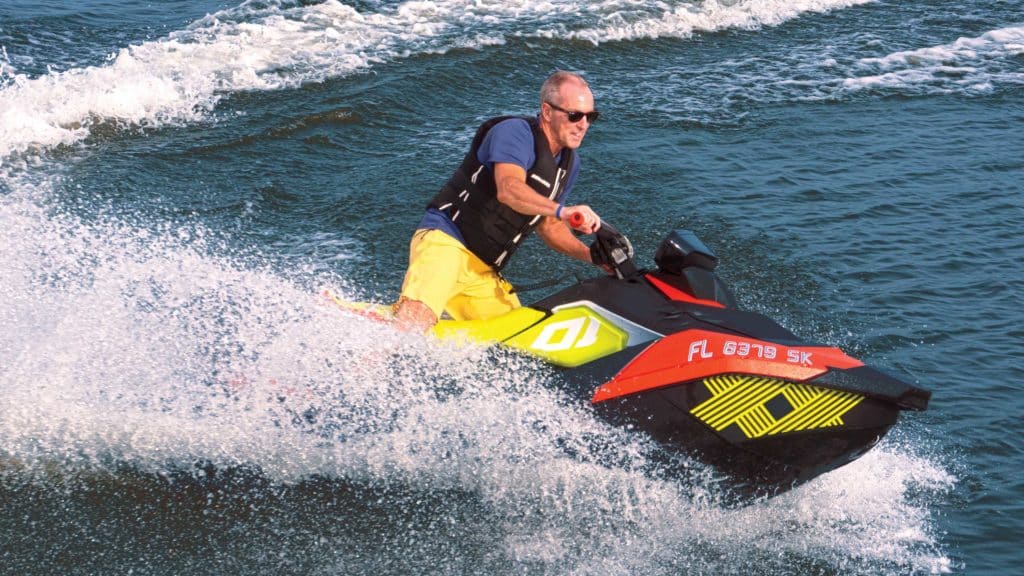
Some of the most fun I’ve ever had on the water has involved operating a personal watercraft. Whether it’s been fishing, making flat-out speed runs or long-distance cruising, riding a PWC has been a big source of on-water enjoyment.
But sometimes when I’m riding one, or talking about how much fun it is to drive one, I notice the nasty looks coming from other boaters. Why is that? PWC riders have long gotten a bad rap for being incompetent or reckless, or both. The best way to combat that misconception is to educate yourself on the best and safest ways to handle a PWC on the water while still having an absolute blast. Here are a few factors to consider.
A PWC is a Boat
They may seem like motorcycles, stunt vehicles or speed rockets, or whatever you want to call them, but by any legal definition, a PWC is a boat. It must be registered according to your state laws, and when you’re operating it, you must follow the nautical rules of the road. This means that when you’re coming upon another vessel, be it a powerboat, sailboat, kayak or stand-up paddleboard, you have to know which has the right of way.
Even when you have the right of way, figure out if asserting that right is your best course of action. Your first priority as the operator of any vessel is to avoid a collision. This means maintaining safe speeds in heavily trafficked areas and keeping a respectable distance from other vessels. Because a PWC is typically more nimble and has a shallower draft than most boats, it could be up to the PWC driver to take evasive maneuvers in a narrow channel or a crowded waterway, and in situations where other boats might not have the room or the depth to get out of the way.
Also, if your state requires a boater card, that applies to running a PWC too. To find out your state’s boater-card requirements, go to boat-ed.com.
Wear Your Lanyard
This is true of anyone running any boat, but with a PWC—where if you get knocked around, there is no freeboard holding you in—it is paramount. In some states, such as Texas, it’s the law to wear a lanyard when operating above idle speed. Doing so will ensure your PWC stops should you fall off during aggressive riding or hitting unexpected rough water.
Read Next: Long-Distance Cruising Aboard a PWC
Social Distance
Perhaps the biggest complaint against PWCs is that riders often buzz around other boats at high speeds, either cutting in and out in front of slower-moving boats, or getting too close for comfort behind someone’s transom to jump their wake. Don’t do this. It can be a ton of fun to jump another boat’s wake, but make sure you are at a safe enough distance to ensure you don’t crash into a boat that might stop suddenly or take an unexpected turn. Keep your distance from other PWCs too.
Buzz Off
It’s common courtesy when someone is anchored outside of a channel, whether fishing, rafting up, or just relaxing on the hook, to slow down and give that boat a wide berth. PWCs should do the same. Nothing ruins a good fishing hole faster than an unaware PWC buzzing through the middle of it.
If you can be aware of the rules of navigation and practice common courtesy, then getting out on a PWC can be one of the best times on the water you can possibly have.
What are the Rules of the Road?
Not sure what the rules are and need some navigation guidance? Brush up on your general knowledge with Chapman Piloting & Seamanship. To be certain of the rules of the road, look into a boater education course. BoatU.S. offers free online boating-safety education courses for 35 states. For more information, visit boatus.org/free.









